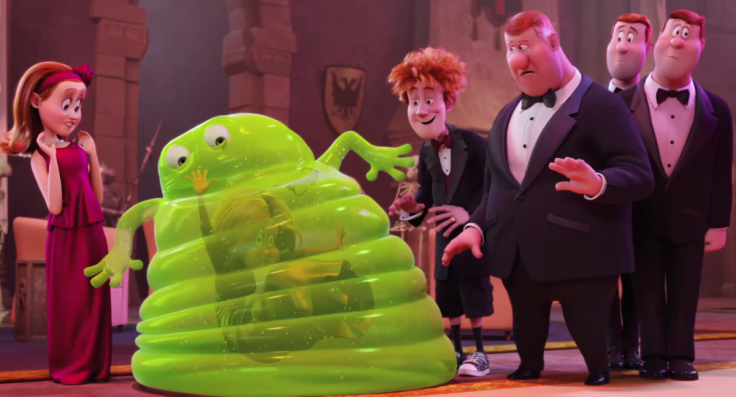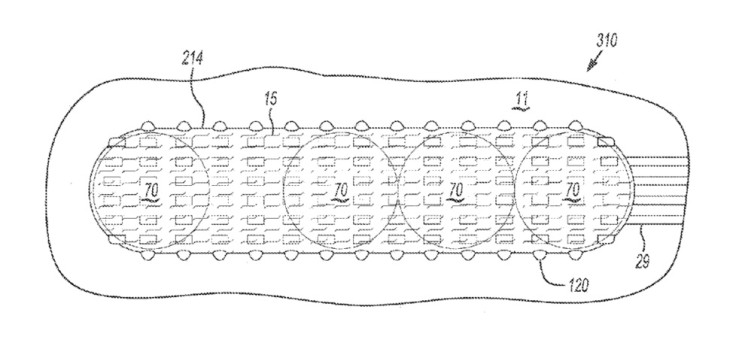Nasa patents shape-changing rover that looks and moves like Blobby the jelly monster

Nasa has patented an unusual new design for a Mars rover that is filled with fluid and features locomotion that enables it to slither over the surface of the red planet like a worm.
The rover patent was published by the US Patent and Trademark Office on 6 January, and according to PatentYogi, it describes a rover that looks and moves a lot like Blobby, the jelly monster in Hotel Transylvania, a popular spooky animated children's film franchise directed by Dexter's Laboratory creator Genndy Tartakovsky.
In a sharp departure from existing Nasa rovers, the "amorphous robot" described by the space agency consists of a large bladder that is filled with a fluid containing shape memory polymers.
The outside of the bladder is covered in an outer layer that has bumps on it to enable the rover to grip surfaces so it can move, while the inside of the rover features four different valve assemblies that draw fluid from one compartment and then discharge it into another compartment of the bladder.

The valves alternate to direct motion of the fluid in different directions within the bladder, which achieves locomotion and gets the bladder to alter its shape and size in the part that needs to move forward.
To get the rover to move across the planet's surface like a worm, the bladder also features elongated flexible tubes filled with ferrofluid, a type of liquid that becomes strongly magnetised in the presence of a magnetic field, and a moveable electromagnet. When the electromagnet is energised and then de-energised, it causes the flexible tube to lengthen or shorten in the direction of the motion of the fluid, which causes the rover to move forward over the ground like a worm.

"Once deployed on a surface, conventional rovers are typically propelled along a surface. In particularly sandy or loamy soil environments such as the lunar or Martian surfaces, conventional propulsion devices may become fouled and stuck," Nasa writes in the patent documents.
"Likewise, in some Earth-based roving applications, miniature rovers may be used to search through unstable piles of rubble or confined areas that are inaccessible to human search teams. Conventional rover designs may be less than optimal in these applications due to certain design limitations that may cause the rovers to become irretrievably stuck in the rubble or other difficult to navigate surface features."
Nasa continues to explain that amorphous robots could solve these problems as they "change shape in the direction of intended travel to provide improved surface mobility along with enhanced protection from the elements".
Such robots would be highly useful to explore regions of Mars that can't be reached by existing rovers today, such as small craters and steep hills, which are a struggle for the Curiosity Rover's wheels.
© Copyright IBTimes 2025. All rights reserved.






















